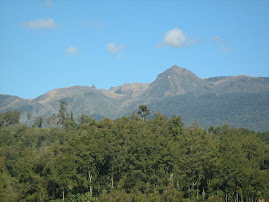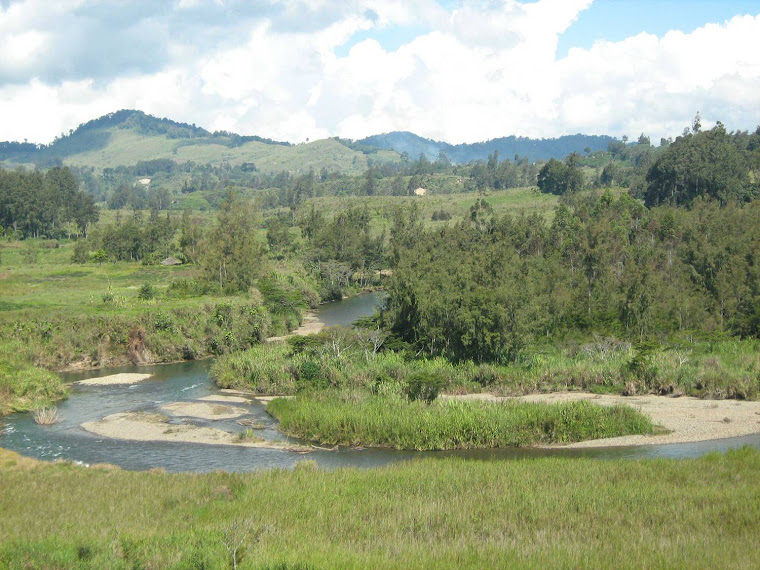By Mathew Yakai in China
WORLD WAR TWO and the consequent Japanese military administration in this region had a serious impact on Chinese society in New Guinea.
In 1942, Japanese military forces attacked New Guinea and occupied parts of it.
After the Japanese attack on Pearl Harbor, the Australian government evacuated their women and children from New Guinea.
However, Chinese women and children were not included as they were “regarded as being in the same category as locals”.
Under the Japanese military administration, the Chinese in New Guinea provided forced labor for the Japanese army and resided in concentration camps.
During the war, most of the Chinese in New Guinea were not protected by the Australian colonial administration because of their nationality.
After the war, New Guinea was returned to Australian rule by which time the
Chinese community was transformed.
First, Chinese in New Guinea ceased to have contact with China. Prior to the outbreak of war, Chinese had kept contact in many ways with Hong Kong and mainland China, especially Canton.
Many Chinese used to send their children to China for their education. This is because in New Guinea, Chinese students attended primary schools operated by missionary organizations which provided only basic education; one needed to go abroad for higher education.
Those China-educated students brought back to New Guinea what is known as “Chinese culture,” which included Chinese language, poem, calligraphy, martial art, traditional beliefs and religions etc.
Those returned students used to play an important role in maintaining Chinese ethnic identity among the Chinese communities in New Guinea.
This contact with China weakened dramatically after the onset of war which made it impossible for Chinese in New Guinea to contact their relatives in China.
The situation did not improve during the civil war between the Chinese Nationalists and the Chinese Communists which started almost immediately after World War II.
It was not until the Communists established the People’s Republic of China (PRC) in 1949 that Chinese in New Guinea could make contact with relatives in China again.
But it was not easy to visit or send their children to China. Australia did not establish diplomatic relations with PRC until 1971.
Some New Guinean Chinese continued to maintain contact with Chinese societies in Hong Kong, Singapore and Malaysia, but not China.
The second change, which was the result of the first, was that the relationship with Australia became strong.
After Japan surrendered in 1945, the Australian army stayed on in Rabaul. Some Chinese began to do business with the Australians.
Also, many Chinese started to send their children to Australia in the 1950s when the Australian government began subsidizing the education of New Guinean Chinese students in Australia.
The number of the Chinese students going to Australia for higher education gradually increased.
In the late 1950s, Australia began allowing Chinese to obtain Australian citizenship. After this, most of the Chinese in New Guinea acquired Australian citizenship and the number of those who spoke English increased.
As a result, Chinese society in New Guinea began to have a closer relationship with Australia.
This Australia-oriented tendency was accelerated by the independence of PNG in 1975.
As independence became imminent, Chinese in New Guinea had to decide whether to stay in PNG as foreigners, or to apply for PNG citizenship.
It also became clear that after independence, their business would be restricted in several respects, arising from the issue of the right of land-ownership and eligibility to obtain license for running stores.
The number of Chinese migrating to Australia began to increase even before PNG became independent.
During the colonial period, most of the Chinese had established their business as storekeepers or wholesalers and some were doing business in shipping, trading and running plantations.
Those Chinese who had finished their education came back to New Guinea to do their business.
But as the independence of PNG was getting close, some of them decided to stay on in Australia even after they had finished their education.
As such, the children remained in Australia, while their parents resided in PNG. As the business situation in PNG worsened with the weakening of the kina, and the rising crime rate in PNG, these Chinese children in Australia persuaded their aging parents to join them in Australia.
While considering that possibility, these members of the older generation invested in properties in Australia and prepared for migration.
They became Australia-oriented in making plans for their old age.
While Chinese migration to Australia has continued after PNG’s independence, there are other kinds of Chinese immigrants who come to contemporary PNG.
These Chinese new comers have increased in number since independence, especially in the 1980s.
They have also changed the character of Chinese society in PNG.
Both the arrival of the new immigrants and the consequent change in the PNG Chinese community has been influenced by the transnational Chinese migration in the Asia-Pacific region.
The contemporary transformation of the Chinese community in PNG should thus be examined in the global context of Chinese migration.
Unlike the old comers, the new comers are from diverse places of origin.
While the former came mainly from China, especially the Siyi area in Guangdong province, the New comers consist of ethnic Chinese from East and Southeast Asian countries such as Malaysia, Singapore, Indonesia, the territories of Hong Kong, Taiwan and PRC.
Even the mainland Chinese immigrants come not only from Guangdong but also various parts of China like Beijing, Shanghai, Fujian etc.
The diversity of the new comers has made the structure of the PNG Chinese population more complex.
The pattern of immigration has also changed. There are many ethnic Chinese employees of East and Southeast Asian companies operating in PNG.
The old comers’ immigration to New Guinea was characterized by chain migration based on kinship and locality.
During the colonial period most of the old comers were single male laborers. After establishing their livelihood, they brought their families or other villagers to New Guinea.
The family was the main economic unit in that period. On the other hand, many new comers arrive in PNG as company workers and after their contracts run out, they may return home or stay and start their business in PNG.
These New comers’ migration movements are affected more by the transnational activities of the companies than kinship and locality.
For a consideration of the feature of the New arrivals, this commentary examines the migration of Malaysian Chinese in this area.
About 80 percent of PNG is covered in rain forest, and forestry is one of the country’s main industries, it is the prime destination for Malaysian timber companies.
Other foreign companies from Japan, South Korea and Australia are also engaged in logging and sawing in PNG, but Malaysian companies have played a crucial role.
One of the Malaysian logging companies, Rimbunan Hijau, is estimated to be in control of over 60 percent of PNG’s log export in the 1990s.
The arrival of Malaysian timber companies in PNG has boosted the immigration of Malaysian Chinese in this country.
Most of the Malaysian Chinese workers in the timber industries were already engaged in logging in Malaysia and most of the Malaysian companies are owned by ethnic Chinese.
Other Malaysian companies, besides the timber companies, have also brought Chinese workers to PNG, such as those in the print media industry.
National is a daily newspaper which has been published since 1993; its owner is the same as that of Rimbunan Hijau.
The National newspaper in PNG is obvious that Malaysian capital has significant influence in the print media according to David Robie, former journalism lecturer at the University of Papua New Guinea.
As the number of Malaysian companies in PNG increases, the Malaysian Business Council was established in 1992 by about 500 Malaysian companies in Port Moresby.
Maybank, one of the Malaysian banks, also has a branch in Port Moresby to cater to the financial demands of Malaysian companies operating in PNG.
Just like the Malaysian timber companies, they bring Chinese workers who make up the biggest component of the Malaysian Chinese community in PNG.
Because these Malaysian Chinese have arrived in PNG recently, they have different characteristics from other Chinese in PNG, especially the local born Chinese.
One of the Malaysian Chinese characteristics is in relation to where they live. The local born Chinese have mainly lived in cities, towns or plantations since the colonial period, mostly in Rabaul and Kavieng.
Malaysian Chinese, on the other hand, live not only in cities and towns, but also in remote areas such as the rainforest.
Whereas the old comers have not resided in some provinces, such as Western and Sandaun, there are Malaysian Chinese who live and engage in logging or other businesses there.
Note: Part three of this series will continue the following Sunday. E-mail the writer on m_yakai@hotmail.com or call 15116988560 for queries. This column acknowledges Tetsu Ichikawa for his contribution.
American movie include Fijians as cast and crew
7 years ago









No comments:
Post a Comment